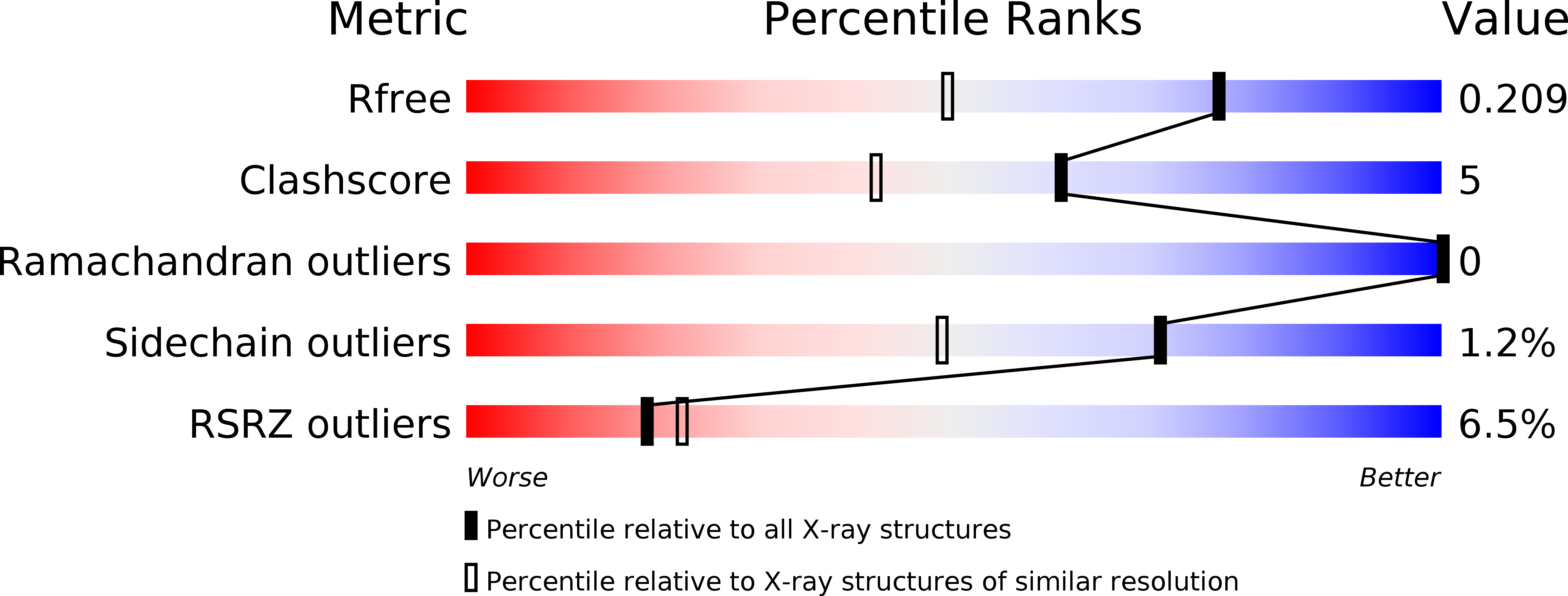Reaction mechanism and molecular basis for selenium/sulfur discrimination of selenocysteine lyase.
Omi, R., Kurokawa, S., Mihara, H., Hayashi, H., Goto, M., Miyahara, I., Kurihara, T., Hirotsu, K., Esaki, N.(2010) J Biol Chem 285: 12133-12139
- PubMed: 20164179
- DOI: https://doi.org/10.1074/jbc.M109.084475
- Primary Citation of Related Structures:
3A9X, 3A9Y, 3A9Z - PubMed Abstract:
Selenocysteine lyase (SCL) catalyzes the pyridoxal 5'-phosphate-dependent removal of selenium from l-selenocysteine to yield l-alanine. The enzyme is proposed to function in the recycling of the micronutrient selenium from degraded selenoproteins containing selenocysteine residue as an essential component. The enzyme exhibits strict substrate specificity toward l-selenocysteine and no activity to its cognate l-cysteine. However, it remains unclear how the enzyme distinguishes between selenocysteine and cysteine. Here, we present mechanistic studies of selenocysteine lyase from rat. ESI-MS analysis of wild-type and C375A mutant SCL revealed that the catalytic reaction proceeds via the formation of an enzyme-bound selenopersulfide intermediate on the catalytically essential Cys-375 residue. UV-visible spectrum analysis and the crystal structure of SCL complexed with l-cysteine demonstrated that the enzyme reversibly forms a nonproductive adduct with l-cysteine. Cys-375 on the flexible loop directed l-selenocysteine, but not l-cysteine, to the correct position and orientation in the active site to initiate the catalytic reaction. These findings provide, for the first time, the basis for understanding how trace amounts of a selenium-containing substrate is distinguished from excessive amounts of its cognate sulfur-containing compound in a biological system.
Organizational Affiliation:
Institute for Chemical Research, Kyoto University, Uji, Kyoto 611-0011, Japan.

















